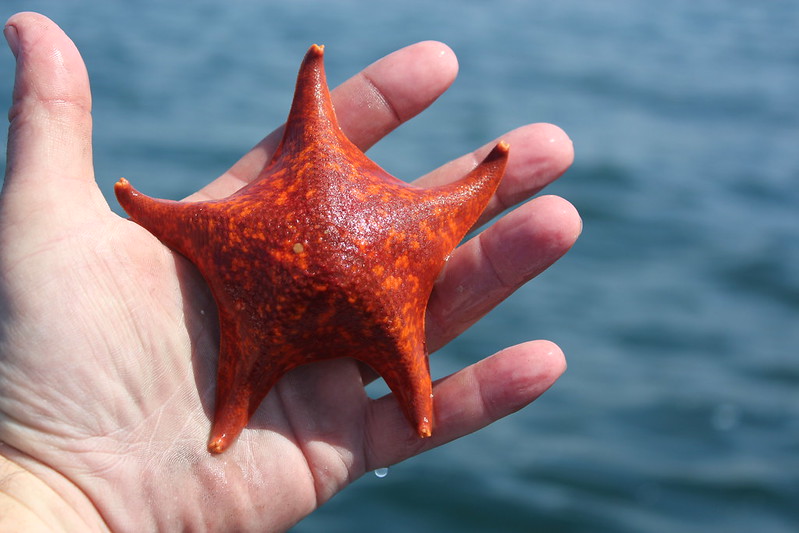Wednesday March 16, 2022

Bat stars like their personal space – a trait that many people can probably find relatable. Solitary animals like the bat star (Patiria miniata) are often equipped with specialized defense mechanisms in order to maintain their independence. For this sea creature, defense comes in the form of five arms connected with webbing similar to the appearance of bat wings. When faced with competition for resources like space, food, or even a mate, bat stars will sometimes settle the issue with an arm-wrestling match. Bat stars can live in a range of water depths, from the shallow intertidal zone down to more than 950 feet. Their geographic distribution ranges from Alaska to the coast to Mexico, and they are abundant in Monterey Bay, where we observed the star shown above.
Like other sea stars, bat stars have a water vascular system, which uses gradients of water pressure to operate thousands of individual tube feet on the undersides of their arms. A circular plate called a madreporite, located on the surface of their bodies where all of the arms meet, is used to suck water into the body. This water is then channeled through the tube feet along each of their five arms to help them travel where they please, or to stay put by using suction. Bat stars also use their tube feet to sense food. They are scavengers, which means that they eat all the leftovers that have dropped to the bottom of the sea – kind of like a vacuum keeping the seafloor clean of dead material.
Bat stars are also adept at giving other benthic animals the cold shoulder. Sea stars secrete a mucus that prevents unwelcome guests from making a home on their skin, which serves as a defense against potential parasites and dissuades stationary animals from hitching a free ride. The mucus also helps the star avoid predation due to its unpleasant taste. Bat stars have pretty tough skin due to a hard substance called calcium carbonate that lines the upper side of their body. These hard plates are a crucial component of the star’s protection. However, sea stars are vulnerable to rising ocean temperatures and ocean acidification, which dissolves calcium carbonate. So, in the efforts to combat climate change, don’t forget about these sea floor-cleaning, mucus secreting, independent sea stars.
This story was written by Andrea Dempsey as part of an internship with FISHBIO.
